A - Sorry about your mishap...Kids... But your question provides with me a good excuse to deal with a related situation that might be of some help to you:
All car owners appreciate the importance of insuring their car's wheels are equally inflated and balanced. The consequences of this not being the case are uneven tire wear, ride bumpiness, and side pulling.
Does that not make common sense?… after all, if you were to build a robotic runner would you build it asymmetrically? I don’t think so…. Engineers don’t design symmetry in planes, cars, etc., for no reason.
CAUSES
Why a strength imbalance might exist in the first place may be due to a number of reasons such as:
- injury
- the development over time of uneven flexibility
- skeletal differences
- unconsciously learned coordination pattern
SO HOW DO YOU KNOW?
Most runners have no clue as whether they are evenly strong. Understandable. Determining whether a strength imbalance exists is not as obvious or easy as dealing with a car where you can simply pull in to a gas station and inspect the tires for uneven wear and check the tires' air pressure.
For runners the symptoms may not be so obvious, and in the early stages be hardly noticeable, if at all.
HERE'S A CASE STUDY
A couple of years ago a client told me in the interview that a year previously she had severely sprained her right ankle. She had been unable to run for 5 weeks but then resumed easy running, and over the next couple of months she gradually built up to her normal previous distances.
However she was frequently having new aches and pains in other areas of her legs that would become intolerable and at times cause her to take several days off. Despite the discomfort, she said was able to continue running (how many of us have been so guilty?). [Note - I have previously dealt with the perils of running when a discomfort is present - see here.]
In search of a possible cause, this client agreed to my suggestion to have her strength balance tested.
HOW TO MEASURE
Now to effectively determine if strength imbalances exist, I recommend accessing a fully equipped fitness centre and that you have a coach or trainer serve as a tester in order to insure objectivity via blind testing. By that I mean, the person being tested should not know what weight (or # of plates) are being used for the various measurements.
And the tests employ single leg exercises for both legs. And by the way, in the many years of working out in gyms I have rarely observed folks doing single leg exercises as a part of their routine, even when being supervised by a personal trainer. Admittedly, it does take a little more time.
Now the exercises I use for the testing, which don't need to be done all in one session, are shown in the gallery of images, below
And many thanks to a great website, Ex.Rx.net, which I strongly recommend, for the following GIF images. Position your cursor over the image and click to see an animation of the movement and description of each of the exercises.
To avoid hurting yourself while performing the tests, it’s extremely important to warm up before the testing by doing 10 minutes of easy to moderate effort running, or biking, or elliptical, as well as 3 or 4 reps of each exercise with increasing weights leading up to the maximal efforts.
Also, the testing should only be done if there is an absence of any muscle discomfort.
THE MEASUREMENTS
I measure 2 aspects:
1) maximum weight that can be handled for 2 reps (an indication of basic strength);
2) the number of repetitions for 1 set with about 75% of the maximum established in (1) ( an indication of endurance).
HOW TO CORRECT ANY IMBALANCES
Now, if the measurements reveal strength differences, and in the case of this woman, as an example, there were very significant differences, I strongly recommend you use weight training which will enable you to objectively know for a fact the number of kg. or lb. being moved.
How so? I recommend 2, or, ideally, 3 sessions per week, working with 3 sets of 10 to 12 reps. exercising the legs separately. So, for each of the single leg exercises, do 3 sets with the weaker leg first to determine what it's capable of - striving to achieve higher rep and/or higher weights.
Whatever number of reps the weaker leg does, you simply match it with the stronger leg and then stop when you reach that number.So you are content to maintain the stronger leg's levels until the weaker one “catches up”.
This single leg approach admittedly takes more time but once the muscles have evened up, you can go back to doing 2-legged exercises. However, every so often (e..g., 4 weeks or so) I would test again to see that you're still balanced.
Returning to our case study, it took this woman just 8 weeks, weight training 3 times per week to even herself up and the annoying aches and pains cleared.
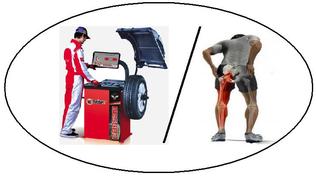
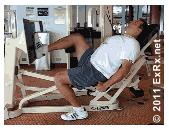
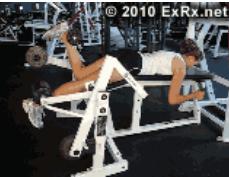
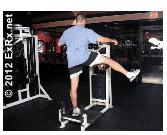
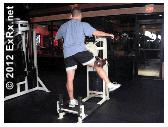
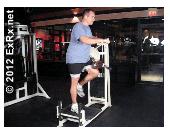
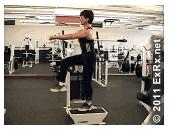
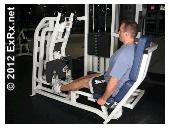
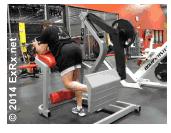
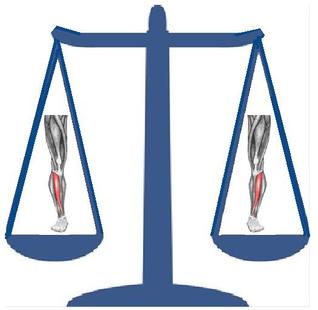
 RSS Feed
RSS Feed
